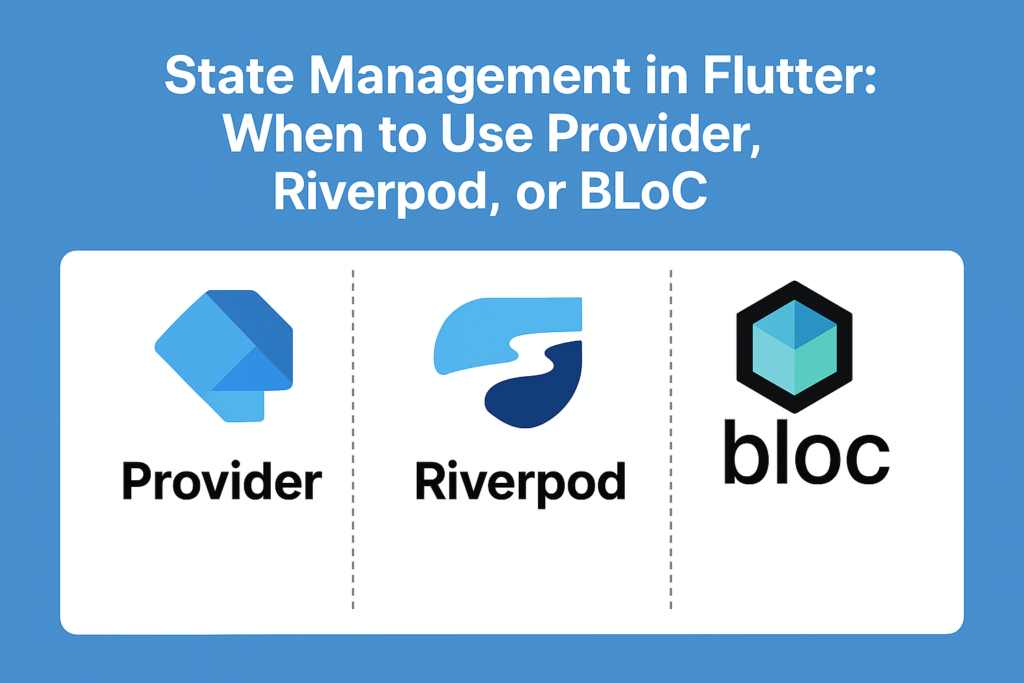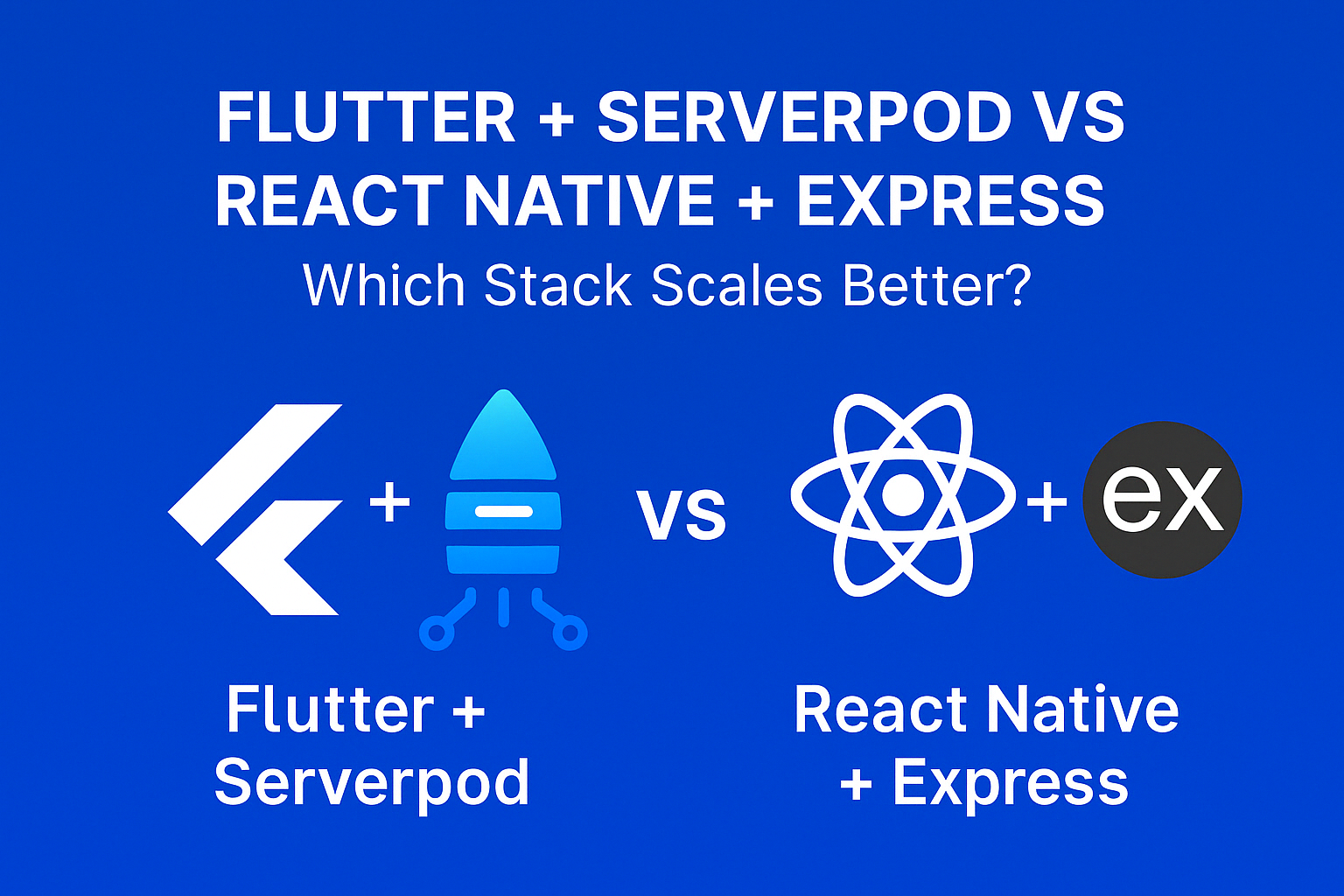
State management is one of the most important—and debated—topics in Flutter development. With several options available, developers often ask: “Which one should I use?”
In this post, we’ll compare the three most popular state management solutions—Provider, Riverpod, and BLoC—to help you decide which tool is best for your project based on simplicity, scalability, performance, and developer experience.
🔹 Why Does State Management Matter?
State represents the data your app needs to function and display the right UI at any given time. Without a proper state management approach, your code becomes hard to maintain, debug, and scale.
Flutter doesn’t enforce a specific solution, which is both a blessing and a curse—flexibility leads to choice overload.
🔄 Quick Overview
| Tool | Difficulty | Boilerplate | Performance | Scalability | Testability |
|---|---|---|---|---|---|
| Provider | Easy | Low | Good | Moderate | Good |
| Riverpod | Medium | Moderate | Excellent | High | Excellent |
| BLoC | Medium–High | High | Excellent | High | Excellent |
🟦 When to Use Provider
✅ Ideal For:
- Small to medium-sized apps
- Beginners learning Flutter
- Quick prototyping
📌 Why Choose It:
Provider is simple to use, easy to understand, and integrates well with the widget tree. It’s great for apps that don’t require overly complex logic or state sharing across many parts of the app.
⚠️ Limitations:
- Can get messy in larger apps
- Less structure compared to Riverpod or BLoC
🟪 When to Use Riverpod
✅ Ideal For:
- Medium to large apps
- Teams that want maintainability and testability
- Apps with async/stream-based state
📌 Why Choose It:
Riverpod is Provider reinvented. It fixes most of Provider’s limitations, supports global state, and works outside the widget tree. It also integrates perfectly with async operations, making it great for modern Flutter apps.
⚠️ Consider This:
- Slight learning curve
- Newer devs might find it overwhelming at first
🟧 When to Use BLoC
✅ Ideal For:
- Large-scale apps with complex state flows
- Projects requiring strict separation of concerns
- Enterprise-level codebases
📌 Why Choose It:
BLoC follows a reactive, event-based pattern. It’s extremely powerful when you want full control over your state and data flow. Combined with Clean Architecture, it’s a go-to choice for professional teams.
⚠️ Trade-Off:
- Requires more boilerplate and setup
- Can feel verbose for smaller apps
🔍 Choosing the Right One: Key Questions to Ask
- Is the app small or large?
- Do I need scalability or speed of development?
- Will the state be local, global, or async-heavy?
- Do I need strong testing and structure?
🧠 My Recommendation
| Scenario | Suggested Tool |
|---|---|
| Learning Flutter / Building MVP | Provider |
| Scalable production app | Riverpod |
| Complex enterprise-level architecture | BLoC |
✅ Final Thoughts
There’s no one-size-fits-all answer to state management in Flutter—but knowing the strengths and trade-offs of Provider, Riverpod, and BLoC makes choosing easier.
Start simple, and scale up as your project grows. Don’t be afraid to mix tools either—use setState for local widgets, and Riverpod or BLoC for app-wide logic.



2 Comments